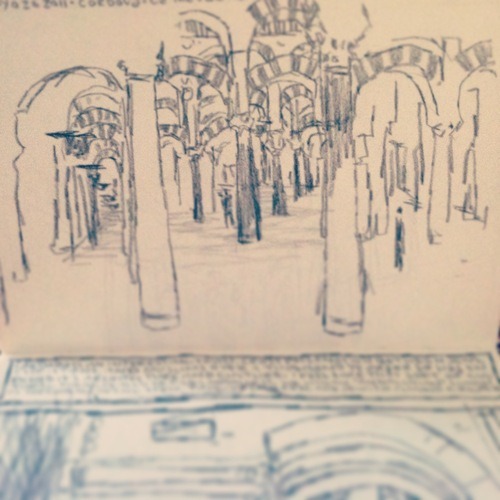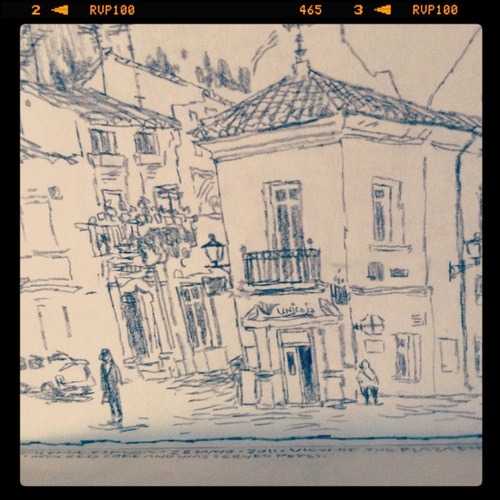Photo

Sometimes I like to browse through other people's art and draw stuff...
6 notes
·
View notes
Photo

Well this was an interesting experiment I guess... : /
1 note
·
View note
Photo

Preliminary sketch for the next member of the F-Company. I was thinking a Japanese fighter pilot for a flightless bird
2 notes
·
View notes
Photo

Jeep Military Officer - Spike
might do a series of these…
Don’t ask me how he drives
6 notes
·
View notes
Photo

Jeep Military Officer - Spike
might do a series of these…
Don't ask me how he drives
6 notes
·
View notes
Photo


Some sexy ladies to help me fight this hangover
0 notes
Photo

Trying to understand more about color
Simple color study
1 note
·
View note
Photo

The weary night guard investigates a strange noise
5 notes
·
View notes
Photo


Some Cory Loftis inspired sketches from tonight
He’s too damn good
1 note
·
View note
Photo

Street Fight’n Man
5 notes
·
View notes
Note
useful stuff
Just curious on how you approach composition and perspective. I feel as if sometimes I think too hard, not really about what to draw but how to draw it and make it look interesting. The comic panels you have been doing are amazing. Any tips/references on improving my knowledge of composition and perspective? What do you think about as you lay your pencil on the drawing paper? what goes through your mind?
*STANDARD DISCLAIMER* I’m not handing down life lessons or trying to assert that there’s a ‘correct way’ to draw. I’m just trying to make perspective more approachable for thems that want to tackle it.
Okay. Let’s do this.
1. Understand what perspective is and what it’s for. Stay away from rulers while you get comfortable.
Everyone struggles with perspective because 1. it’s not well or widely taught and 2. artists tend to see linear perspective as a set of rules rather than a set of tools.
Linear perspective is a TOOL we use to create and depict SPACE. That’s it. That’s all it is. Your goal is not to draw in ‘accurate linear perspective.’ Stay away from the ruler and precision for as long as you can. Your goal is to create the illusion of three-dimensional space on a two-dimensional surface. Perspective is just a tool to help you construct and correct that space.
2. Know in your bones that you can ONLY learn to draw in perspective through physical practice. There is no other way.
Grab some paper and draw with me. If you match me drawing for drawing you will be more fluent in linear perspective and spatial drawing by the end of this post. Unfortunately if you don’t, you won’t be.
3. Sketch around in rough perspective. NO RULERS.

So let’s make some simple space. let’s start with a two dimensional surface…
K. We have a flat, 2D surface. Let’s create some depth by putting a vanishing point in the middle, and having parallel lines converge towards it. Make a gridded plane inside that space.

Good. Let’s make that space meaningful by adding a dude and a road or something. (Again, parallel ‘depth lines’ will converge into the vanishing point along the horizon)

And now we have the rough illusion of some space. I didn’t use any rulers, and it’s not perfectly accurate, but we got our depth from that vanishing point right in the middle of the page. And since we have a little dude in there, we’ve got human scale, which allows us to gauge the size of the space we’ve created. Gives it meaning.

You need people or cars or some recognizable, human-scale THING in there as a frame of reference or your space won’t mean much to your viewer. Watch. We can make that same basic space a whole lot bigger like this:
Same vanishing point in the same place, completely different scale, and a totally different feeling of space. Cool, right?
3. Sketch around in rough perspective MORE. STAY LOOSE.
See what sort of spaces and feelings you can create with vanishing points and gridded planes on a post-it or something. Super small, super rough. Feel it out. Pick a vanishing point or lay out a grid in perspective, and MAKE SOME SPACE. Do it. Draw, I don’t know, a lady and her dog in a desert. I’ll do it, too.

Good job. LOOK AT YOU creating the illusion of space! This is how you’ll thumbnail and plan anything you want to draw in space. All of my drawings start this way. I think about how I want the viewer to feel and then play around with space and composition until I find something that works.
Once you have a sketch you like, and space that you feel, THEN you can take out the ruler and make it more accurate and convincing.
4. Draw environments from life.
I cannot stress this enough. Draw the world around you, try to draw the shapes and angles as you see them, and you will ‘get’ how and why perspective is used. Use something permanent so that you’ll move fast and commit. I usually use black prismacolor pencil.
You’ll learn or reinforce something with every drawing. I learned a lot about multiple vanishing points from this drawing:

Learned from the receding, winding space I tired to draw here:

Layered, interior spaces:

You get the idea.

Life drawing will also help you develop your own shorthand and language for depicting textures, materials, details, natural and architectural features, etc. Do it. Do it all the time. Go to pretty or interesting places just to draw them.

Take a second and just draw a quick sketch of whatever room you’re in.
5. Perspective in formal Illustration: apply what you’ve learned.
1. I always start with research. For this particular location I looked at Angkor Wat.
2. Once I had enough reference, I did a bunch of little thumbnail sketches with a very loose sense of space and picked the one I liked best.
3. Scanned the thumbnail and drew a little more clearly over it. Worked out the rough space before using formal perspective.

4. Reinforced the space with formal perspective. I dropped in pre-made vanishing points over my drawing. If I were drawing in real media here’s where I’d get out the ruler to sketch in some accurate space.
5. Drew the damn thing. Because I do my research, draw from life, and am comfortable drawing in perspective, I can wing it. I just sort of ‘build’ the ruins freehand in the space I’ve established, keeping it more or less accurate, experimenting and playing with details along the way. I erase a lot, too, both in PS and when drawing in pencil. Keeps it fun for me.
And that’s what I know about composition and perspective. If you want more formal instruction on perspective and it’s uses, you can use John Buscema’s How to Draw Comics the Marvel Way. Or If you want to get really intense about it, Andrew Loomis can help you.
-Jake Wyatt
42K notes
·
View notes
Photo

Doodled a Suezo randomly
Anybody else remember monster rancher?
5 notes
·
View notes
Video
Could not stop smiling while watching this, I need to get back into music
youtube
hey! some folks on tumblr were asking about how i make my music, so i went all overboard and made this lil animation about it! new and old tunes! feel free to ask questions and stuff.
1K notes
·
View notes
Video
Check out this awesome kickstarter!
100 hours of video tutorials from all different kinds of professional artists that you get to keep forever! I’m talking sculptors, water color, gouache, digital painting, sketching, 3D covering character design, concept art, environments, style, anything and everything people!
All for just £18! (~$25)
This is like a golden treasure trove of art learnitude!
#art#kickstarter#knowledge#learn#digital art#sculpting#sketch#drawing#video#deal#professional#artists
1 note
·
View note
Photo

Cool down character sketch before bed
She’s laying down the law
I actually like how this one turned out :)
4 notes
·
View notes

